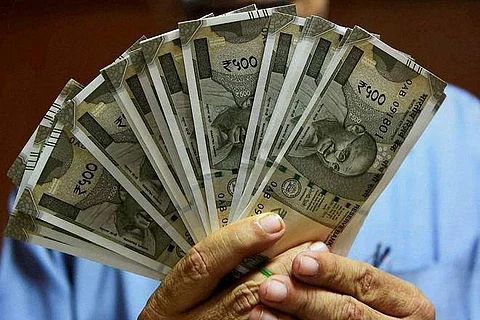

India’s foreign exchange reserves touched an all-time high of $605 billion last week. It means, we can now comfortably pay off our entire external debt of $563.5 billion as on December, 2020 and still be left with spare change. From the 1991 balance of payment crisis that caused ‘a threat of national humiliation,’ the 30-year journey from ‘agony to comfort’ is indeed a matter of pride.
But why hold forex reserves? And does a higher number bring more prosperity? Forex reserves are external assets readily available to the RBI to tide over any external shocks. Foremost among them is shielding currency from volatility. The RBI Act clearly states that a stable exchange rate forms the overall objective of its forex reserve management policy. But it also has an understated objective to support monetary policy by ensuring liquidity in the forex market.
Besides, it limits external vulnerability by maintaining foreign currency liquidity to absorb shocks during crises like the 2013 taper tantrum event, provides confidence to markets especially credit rating agencies as external obligations can easily and always be met. This is critical as it helps reduce costs and importantly, emboldens the sovereign towards overseas borrowing. Until the 1991 balance of payment crisis, reserve management was essentially based on the traditional trade-based approach of calculating import cover, which shrank to a deplorable 3 weeks in December, 1990.
As of December 2020, our import cover shot up to 18.6 months. However, it has undergone a paradigm shift and the adequacy of reserves are now determined based on three other indicators. First up is a money-based indicator that hints at potential resident-based capital flight. Based on this, the proportion of net forex assets to currency with the public sharply increased from a dismal 15% in 1991 to 157% as on May, 21. Likewise, its proportion to broad money (M3) jumped from 3% to 23.8%. Should there be a capital flight in the event interest rates rise in developed markets, any consequent volatility can be tackled by injecting rupee liquidity via dollar sales.
Next, debt-based indicators gauge risks associated with adverse developments in internal capital markets. Since shortterm debt provides a measure of all debt repayments to nonresidents, it’s a useful measure of how quickly a country would be forced to adjust during capital market distortions. It’s the important indicator of reserve adequacy in countries with significant but uncertain access to capital markets.
Here’s where we stand: The proportion of short-term debt (with maturity up to one year) to forex reserves declined from 147% in 1991 to 17.7% as of December, 2020. Lower percentage indicates fewer debt obligations and hence good. Similarly, the proportion of volatile capital flows (including cumulative portfolio inflows and shortterm debt) to reserves too reduced from 147% in 1991 to 67% as on December, 2020. Forex reserves are made up of all but three items gold, SDRs and foreign currency assets.
As on June 4, of the $605 billion total forex reserves, foreign currency assets accounted for about 93% at $560 billion. On last count, over 67% of this is invested in securities (comprising US dollar, euro, pound sterling and Japanese yen). Most of the securities are considered liquid as RBI makes money via sale-purchase transactions, though this income isn’t attractive given the ultra-cheap rates.
The critical issue is whether other external assets are readily available for use. Particularly gold, which comprises 6.2% of official reserves, the quality is not in a form that is readily accepted in international financial markets, according to former RBI Governor Y V Reddy. That said, he reasoned that India had devised a mechanism by which a part of the gold holdings could be converted into usable foreign currency.